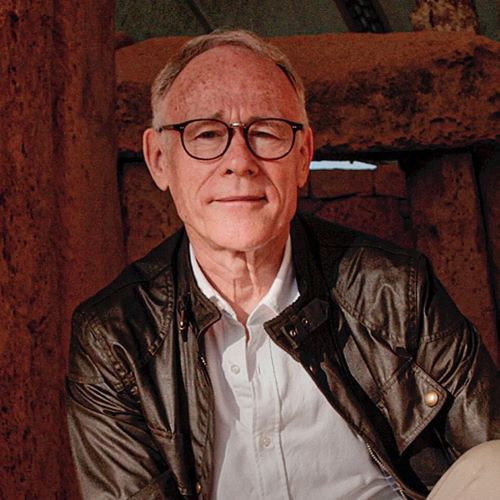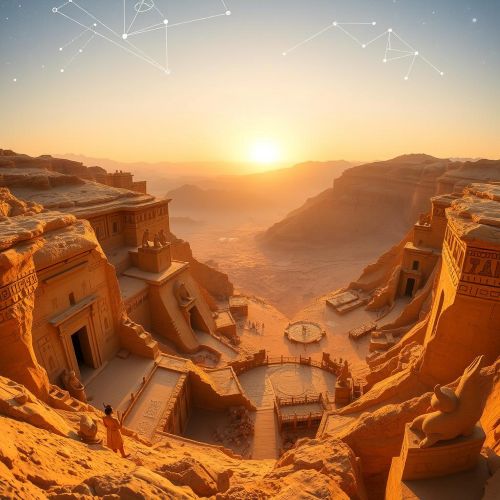Graham Hancock
Introduction
Graham Hancock, a British author and journalist born on August 2, 1950, has gained recognition for his alternative interpretations of ancient history and lost civilizations. His work challenges conventional archaeological perspectives, suggesting that an advanced prehistoric culture existed during the Ice Age but was wiped out by catastrophic events. He theorizes that remnants of this lost society influenced early civilizations, shaping the myths and knowledge of cultures such as the Egyptians, Sumerians, and Mesoamericans. Despite criticism from mainstream scholars, his books and documentaries continue to spark curiosity and debate among audiences worldwide.
Area of Expertise
Hancock’s work focuses on reinterpreting ancient history by linking mythology, archaeology, and astronomy. He explores the idea that myths may serve as encoded records of real historical events, particularly global catastrophes. His research delves into the alignment of ancient monuments with celestial phenomena, suggesting they were designed with advanced knowledge of astronomy. Additionally, he speculates on the role of altered states of consciousness, including the use of psychedelics, in shaping early spiritual and cultural traditions. While his ideas have captivated many, they remain controversial within mainstream academic circles.
Books & Publications
Hancock has built a prolific career as a writer, transitioning from journalism to exploring ancient mysteries and lost civilizations. His early work, Lords of Poverty (1989), was a sharp critique of the global aid industry, but he soon turned his attention to historical enigmas.
His breakthrough book, The Sign and the Seal (1992), chronicled his search for the Ark of the Covenant, taking readers through Ethiopia, Israel, and Egypt. This quest ignited his fascination with lost knowledge and ancient civilizations, which he explored further in Fingerprints of the Gods (1995), his most famous work. The book suggests an advanced Ice Age civilization influenced later cultures, an idea he expanded in Magicians of the Gods (2015) and America Before (2019).
Hancock has also explored alternative histories of ancient sites. Keeper of Genesis (1996), co-written with Robert Bauval, argues that the Great Sphinx and Pyramids encode astronomical knowledge dating back to 10,500 BC. Heaven’s Mirror (1998) examines how ancient monuments align with celestial bodies, while Underworld (2002) investigates submerged ruins that could indicate forgotten civilizations. His 2005 book Supernatural explores altered states of consciousness, shamanism, and cave art as a possible link to humanity’s early spiritual experiences.
Beyond non-fiction, Hancock has ventured into storytelling with novels such as Entangled (2010), a time-travel fantasy inspired by his research, and the War God series, which blends history and mythology. His works, often met with skepticism from mainstream scholars, continue to spark debate and captivate readers intrigued by humanity’s forgotten past.
Research & Contributions
Hancock’s research revolves around reinterpreting ancient history through unconventional lenses. He challenges mainstream archaeology by proposing that a sophisticated civilization existed during the Ice Age but was wiped out by cataclysmic events. His theories often draw from mythology, astronomy, and archaeological anomalies to suggest that ancient cultures inherited knowledge from these lost ancestors.
One of his key arguments, the Younger Dryas Impact Hypothesis, posits that a series of comet strikes around 12,000 years ago triggered massive floods and wiped out this civilization. He sees global flood myths, including Plato’s tale of Atlantis, as encoded memories of this disaster.
Hancock also explores hyperdiffusionism, arguing that similarities among ancient cultures—such as pyramid-building and mythological themes—suggest a common origin rather than independent development. He has promoted the Orion Correlation Theory alongside Robert Bauval, claiming that the Giza pyramids align with Orion’s Belt, though critics argue the alignment is coincidental.
His work extends to underwater archaeology, where he investigates submerged structures off India and Japan, suggesting they may be remnants of pre-Ice Age civilizations. He also views mythology as a historical record, believing that legends preserve real events in symbolic form.
A distinctive aspect of Hancock’s work is his focus on spiritual technology. He suggests that ancient civilizations might have used altered states of consciousness—through meditation and psychedelics—to harness energies or even move massive stone structures. He speculates that chanting priests may have played a role in levitating the blocks of the Great Pyramid.
Though widely criticized for lacking scientific rigor, Hancock’s ideas continue to captivate readers and inspire alternative researchers seeking to uncover hidden aspects of human history.
Awards & Recognitions
Graham Hancock has not received many mainstream academic awards, but his impact on alternative history and archaeology is undeniable. His name is associated with the Graham Hancock Award, a $1,000 prize given for the best poster presentation at the Conference on Precession and Ancient Knowledge (CPAK).
While he has faced skepticism from scholars, Hancock has been recognized for his work in bringing unconventional historical theories to a wide audience. One of his early achievements was winning the Anisfield-Wolf Book Award in 1991 for African Ark: People and Ancient Cultures of Ethiopia and the Horn of Africa.
Beyond formal accolades, Hancock’s influence is evident in the success of his books and documentaries, which have captivated millions worldwide. His ability to challenge mainstream narratives and inspire curiosity about humanity’s forgotten past has solidified his status as a key figure in alternative archaeology.
Social Media Profiles
Graham Hancock actively engages with his audience through various social media platforms and his official website. These channels provide updates on his research, upcoming projects, and public appearances. Some of his notable online presences include:
- Official Website:
- Twitter: Regular updates and interactions with followers.
- YouTube: Features interviews, lectures, and discussions on his theories.
- Facebook: A platform for sharing articles, videos, and announcements.
Through these platforms, Hancock continues to connect with a global audience, fostering discussions about humanity’s past and future.
Bibliographic Sources
Graham Hancock Official Website:
Wikipedia:
Goodreads:
Wasiwaska Research Center:
Awards & Winners:




